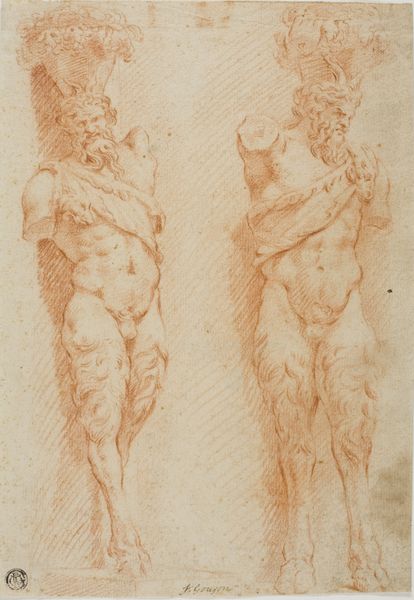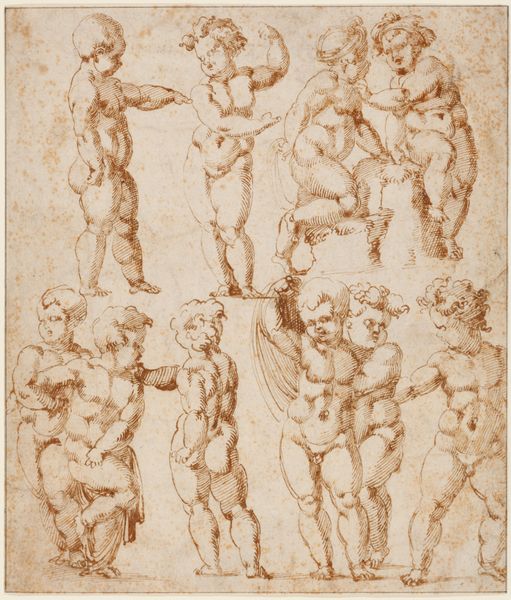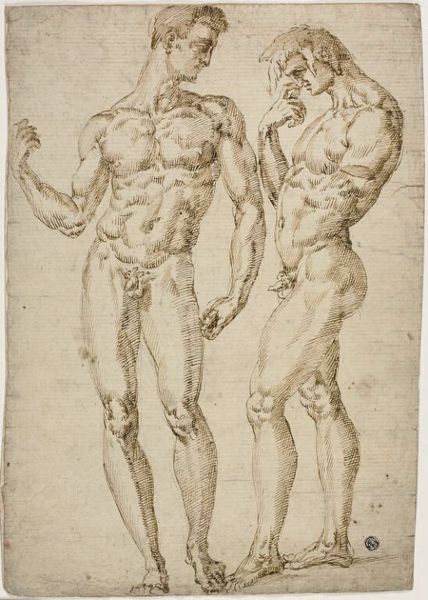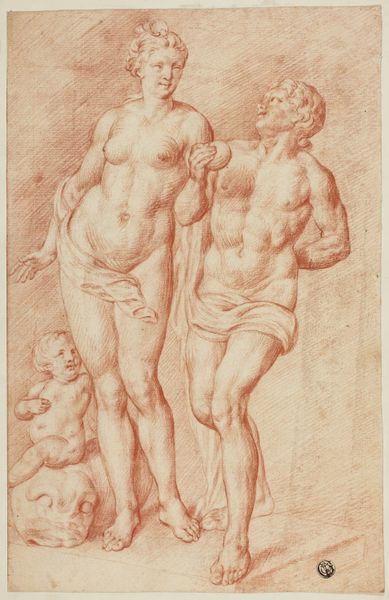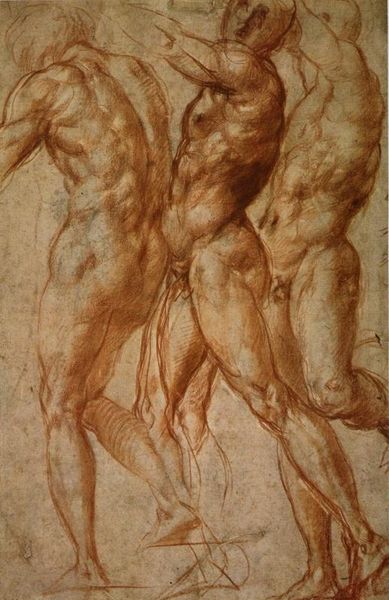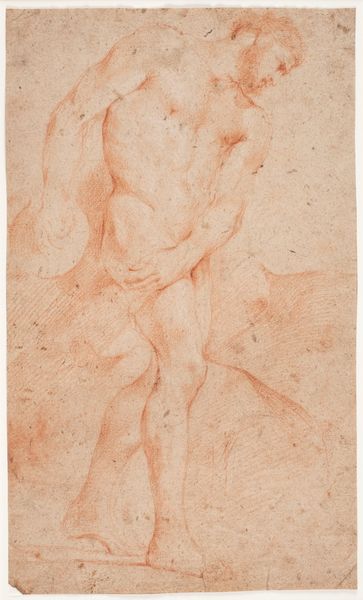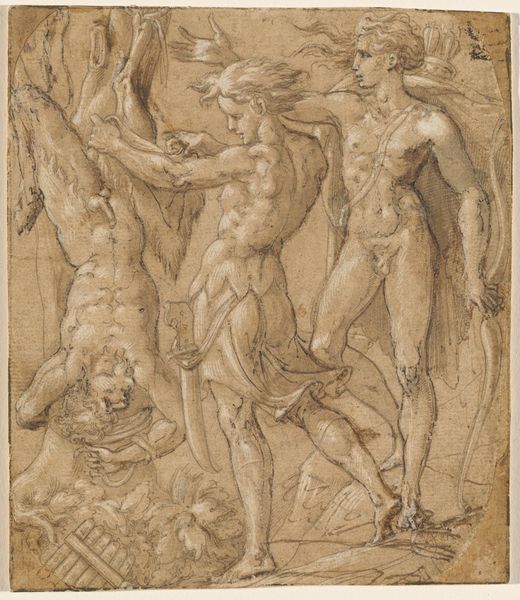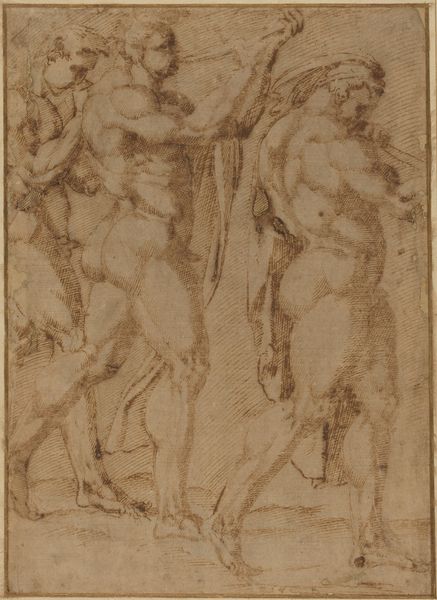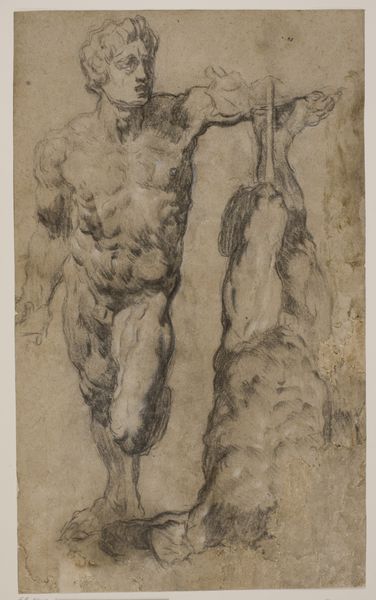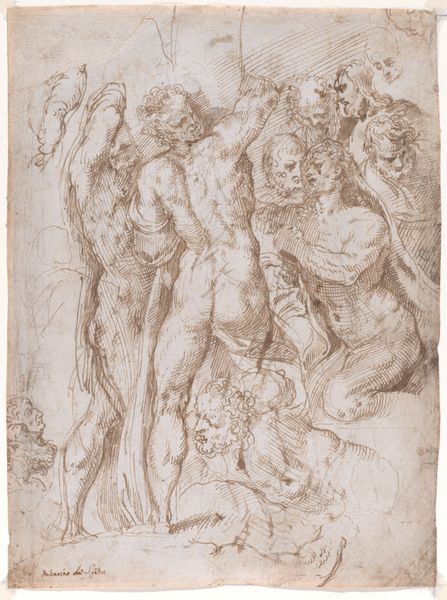
drawing, ink
#
drawing
#
charcoal drawing
#
mannerism
#
figuration
#
11_renaissance
#
ink
#
history-painting
#
italian-renaissance
#
nude
Dimensions: other (French mat): 15 7/8 x 11 1/2 in. (40.32 x 29.21 cm) sight: 13 x 8 5/8 in. (33.02 x 21.91 cm)
Copyright: National Gallery of Art: CC0 1.0
Curator: It's stark, isn't it? Immediately I see tension; muscles taut, poised... ready for action, perhaps? There is also something fragmented and unfinshed in its feel, an immediacy that speaks across the centuries. Editor: Indeed. We're looking at a drawing from around 1520, attributed to Baccio Bandinelli, titled "Two Male Nudes." Executed in ink, its place in art history lies in its example of Renaissance draftsmanship, and its role in Bandinelli’s process, as it highlights the Renaissance concern with idealized male form. Curator: Idealized yes, but also weaponized! One figure seems to grasp the hilt of a sword. Considering Bandinelli's role within the Florentine art scene, do you see echoes of political struggles represented through these hyper-masculine forms? Were these figures meant to symbolize strength during a volatile period in Florentine history? Editor: The power dynamics within the Florentine Republic were certainly in constant flux during this period, particularly with the rise and fall of the Medici. It’s possible that Bandinelli, who was often in competition with the likes of Michelangelo and other prominent artists, consciously crafted these figures as embodiments of strength in order to, in a sense, display a forceful masculine power of his own... an artistic one as much as anything else. Curator: I agree, but there may be room to explore the dynamics of that rivalry beyond male aggression. I wonder if this preoccupation with the male form further cements notions of dominance within society? Was there a conscious effort to erase other identities to champion an idea of power rooted in idealized, male anatomy? This work can be interpreted as participating in a very particular construction of masculine authority and power. Editor: That’s a valid reading. And yet, when analyzing these power dynamics, one can consider the complex patronage system prevalent at the time. Artistic choices were rarely entirely independent. Patrons, often powerful families or institutions, would influence, and even dictate, subject matter and style to promote their own agendas, and it’s equally valuable to note their contributions to the works displayed for their publics. Curator: Ultimately, Bandinelli's drawing remains a powerful exploration of the male form, sparking conversation centuries later. Editor: A testament to the ongoing dialogue between art, history, and identity, then.
Comments
No comments
Be the first to comment and join the conversation on the ultimate creative platform.

